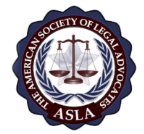On Saturday, November 5, 2011, a 20-year-old Parkersburg man fell asleep as he was driving on W.Va Highway 7 near Morgantown, WV, causing him to run off the left side of the road and crash his car on a utility pole. Most of us realize how dangerous driving under the influence or texting while driving is, but driving while drowsy is equally dangerous. Even though, according to a new AAA study, 96% of Americans think it is unacceptable for someone else to drive when they are so sleepy they are having trouble keeping their eyes open, one-third of Americans admitted to doing this themselves.
Drowsy Driving Prevention Week
November 6-12, 2011 has been designated as Drowsy Driving Prevention Week by the National Sleep Foundation in partnership with AA to reduce the number of fatigue-related accidents and save lives. In 2010, the AAA Foundation for Traffic Safety released a study that shows that fatigue is a factor in one in six deadly crashes; one in eight crashes resulting in hospitalization, and one in fourteen crashes in which a vehicle was towed. The National Highway Traffic Safety Administration (NHTSA) estimates that drowsy driving results in 1,550 deaths, 76,000 injuries, and more than 100,000 accidents every year.
Risk Factors
Younger drivers aged 16-24 were twice as likely to fall asleep while driving as compared to older drivers. Almost one-quarter of 18 to 29-year-olds report they have fallen asleep at the wheel at some point during the past year, according to a new survey on sleep and fatigue conducted by the National Sleep Foundation. And half of U.S. adults admit to driving while they are tired.
Shift Workers:20 to 30 percent of those with non-traditional work schedules have had a sleep-related driving mishap within the last year.
Males: A much higher percentage of men (52%) reported falling asleep while driving as compared to women (30%).
Lone Drivers: Vehicles in which there were one or more passengers were 50% less likely to be involved in a fatigue-related crash.
Undiagnosed Sleep Disorders: An estimated 50 million Americans are afflicted with chronic insomnia, sleep apnea, narcolepsy, and restless leg syndrome which all lead to excessive daytime sleepiness.
Commercial Drivers: Truck drivers in the United States are required to get at least eight hours a day off each day and work no more than 60 hours per week. Drivers who have logged 10 hours behind the wheel must have the next eight off. A study reported in the New England Journal of Medicines showed that in one out of every eight trips, drivers did not take their full eight-hour break. When they got breaks, they spent an average of five hours sleeping. Although all 80 drivers knew they were being monitored on videotape, 45 had at least one episode where they were judged to be drowsy behind the wheel. Each year in the United States 110,000 people are injured and 5,000 killed in commercial truck accidents.
The U.S. National Highway Traffic Safety Administration has concluded that over 1,500 people die each year in the United States when drivers — both truckers and non-truckers — fall asleep behind the wheel; another 76,000 are injured.
Sleepiness Impairs Driving Much the Same as Alcohol
Drowsy driving is similar in its effect to driving while impaired by alcohol or drugs. “Driving while drowsy is no different than driving under the influence of alcohol or drugs,” said Richard Gelula, the National Sleep Foundation’s executive director. “Sleepiness slows reaction time, decreases awareness, and impairs judgment.”
After staying awake for 24 hours straight, a person will be about as impaired as if he had consumed enough alcohol to be legally drunk in most states.
In one experiment, one group of participants stayed awake for 28 hours. In a second group, they drank alcohol every half hour until they reached a blood alcohol concentration of 0.10 percent which is the drunken-driving standard in most American states.
Every half hour, the subjects took a computerized test of hand-eye coordination. After 17 hours, they were about as impaired as they were with an alcohol level of 0.05 percent, which many Western countries define as legally drunk. Results showed that after 24 hours of sleeplessness, participants were about as impaired as they were at the 0.10 percent level of blood alcohol.
The State of New Jersey has now made any injury crash involving fatigue a felony.
If you have been the victim of a truck or car accident involving driver fatigue, we can help you through your recovery at www.RobinetteLaw.com. For tips on how to avoid becoming a drowsy driver statistic, see us at www.wvaccidentlawyer.org.
Practice Areas
- Personal Injury Overview
- Bicycle Accidents
- Birth Injuries
- Brain Injuries
- Burn Injuries
- Car Accidents
- Cerebral Palsy Birth Injuries
- Commercial Delivery Truck Collisions
- Construction Site Injuries
- Defective Product Injuries
- Dog Bite Injuries
- Drunk Driver (DUI) Accidents
- Gas Explosion Injuries
- Insurance Claim Disputes
- Medical Malpractice
- Mining Accident Injuries
- Motorcycle Accidents
- Pedestrian Accidents
- Rear-End Collisions
- Scaffold & Ladder Fall Injuries
- Shoulder Dystocia Birth Injuries
- Slip And Fall Accidents
- Spinal Cord Injuries
- Truck Accidents
- Uninsured Motorists
- Work Accidents
- Wrongful Death
- Wrongful Diagnosis













